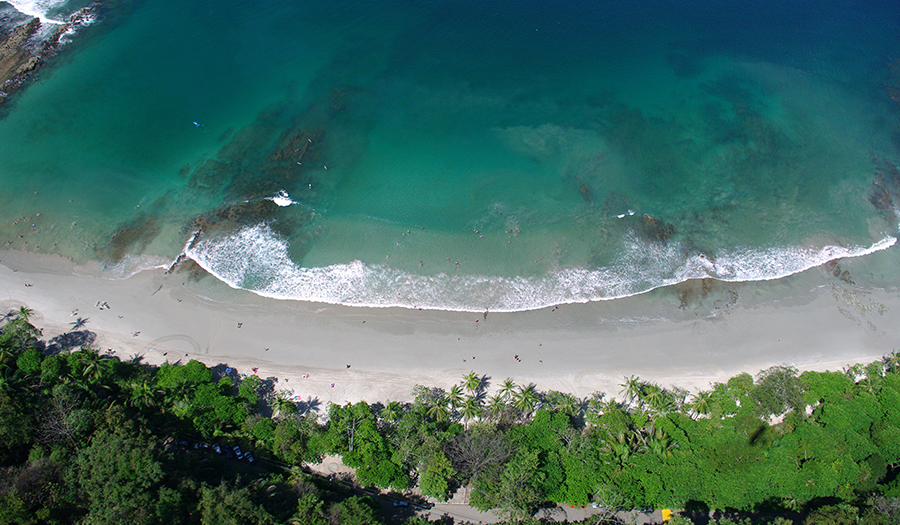The breaking waves can generate currents along the coast, currents towards the coast and currents going back out to sea. The latter are known as rip currents.
Rip currents are formed when the water that reaches the beach returns to the sea in specific areas and can be formed in very short time, causing great danger to bathers. Simply put, this is a phenomenon that consists of surface currents of water that are directed offshore with great force.
When the tide is going out, the surf currents are more intense. Usually the waves with long periods of time between one ridge and another are indicative of strong breakers on the beaches. For example, waves with periods greater than 15 seconds between one and the other, especially in the open sea, generate strong rip currents.
In Costa Rica it is common to hear about cases of drowning on the beaches, especially in peak season. The number of submersion deaths is today one of the leading causes of accidental death in the country, with an average of 140 to 190 people per year.
Although the rip current does not submerge the person, when she or he sees themselves being dragged out they start panicking, get tired and can drown.
How to detect them?
Rip currents inhibit waves, this because the force pushing inwards make the waves change the way they break in that area, or they are practically non-existent.
That is to say, if we see break zones on the beach interspersed with other areas where there are no waves, we may be facing a rip current.
In appearance it could seem like a calm area because there are no waves, and you could choose this area for a swim, however this is a mistake, because as soon as you stop touching the bottom you will not be able to get back to the beach and will be dragged outwards.
It is sometimes possible to distinguish accumulations of decomposing particles, organisms or organic material in front of the current. Most of the rip currents in Costa Rica are visible for this reason.
In the case of Punta Leona our lifeguards place flags or caution signs if they spot any current or they will attract the attention of the bathers and even ask them to get out of the sea.
It is essential that you not only respect the signs on the beach but also follow the instructions of our lifeguard team.
Escaping from a current
Bathers caught by the current try to swim towards the beach, many times against the current, get exhausted in the attempt and panic.
Once inside the current, the most important thing is not to panic because the current will stop dragging sooner or later: They are also known as return currents because the flows write circular orbits, that is to say, once outside their influence you can easily be dragged back in from one side of the current to the other.
-Do not fight the current
- Escape from the current by swimming in a direction parallel to the shore. When out of the current stream, swim diagonally away from it and towards the shore.
- If you cannot escape swimming, staying afloat will always be the priority, until the current stops dragging you offshore (rarely that distance will be more than 50 meters).
- When the current has dissipated, then you have to swim diagonally away from it and towards the shore.
- If at any time you feel that you cannot reach the shore, ask for help shouting or waving your arms.
Cesar Vargas
Journalist

